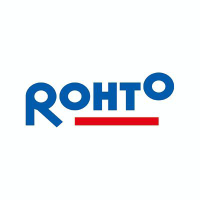Company Analysis Yamato Kogyo Co., Ltd.
1. Summary
Advantages
- Price (8726 ¥) is less than fair price (32053.27 ¥)
- The stock's return over the last year (21.01%) is higher than the sector average (0.0872%).
- The company's current efficiency (ROE=14.53%) is higher than the sector average (ROE=9.7%)
Disadvantages
- Dividends (3.95%) are below the sector average (4.29%).
- Current debt level 0.3812% has increased over 5 years from 0.018%.
Similar companies
2. Share price and performance
2.1. Share price
2.3. Market efficiency
| Yamato Kogyo Co., Ltd. | Index | ||
|---|---|---|---|
| 7 days | -3% | 0.7% | 2.5% |
| 90 days | 14.2% | 2.1% | 11.5% |
| 1 year | 21% | 0.1% | 19.4% |
5444 vs Sector: Yamato Kogyo Co., Ltd. has outperformed the "" sector by 20.92% over the past year.
5444 vs Market: Yamato Kogyo Co., Ltd. has outperformed the market by 1.61% over the past year.
Stable price: 5444 is not significantly more volatile than the rest of the market on "Tokyo Stock Exchange" over the last 3 months, with typical variations of +/- 5% per week.
Long period: 5444 with weekly volatility of 0.404% over the past year.
3. Summary of the report
4. Fundamental Analysis
4.1. Stock price and price forecast
Below fair price: The current price (8726 ¥) is lower than the fair price (32053.27 ¥).
Price significantly below the fair price: The current price (8726 ¥) is 267.3% lower than the fair price.
4.2. P/E
P/E vs Sector: The company's P/E (7.81) is lower than that of the sector as a whole (117.8).
P/E vs Market: The company's P/E (7.81) is lower than that of the market as a whole (150.15).
4.2.1 P/E Similar companies
4.3. P/BV
P/BV vs Sector: The company's P/BV (0.9859) is lower than that of the sector as a whole (99).
P/BV vs Market: The company's P/BV (0.9859) is lower than that of the market as a whole (120.08).
4.3.1 P/BV Similar companies
4.4. P/S
P/S vs Sector: The company's P/S indicator (3.35) is lower than that of the sector as a whole (98.89).
P/S vs Market: The company's P/S indicator (3.35) is lower than that of the market as a whole (120.98).
4.4.1 P/S Similar companies
4.5. EV/Ebitda
EV/Ebitda vs Sector: The company's EV/Ebitda (3) is lower than that of the sector as a whole (115.13).
EV/Ebitda vs Market: The company's EV/Ebitda (3) is lower than that of the market as a whole (120.75).
5. Profitability
5.1. Profitability and revenue
5.2. Earnings per share - EPS
5.3. Past profitability Net Income
Yield Trend: Rising and has grown by 13725% over the last 5 years.
Earnings Slowdown: The last year's return (0%) is below the 5-year average return (13725%).
Profitability vs Sector: The return for the last year (0%) exceeds the return for the sector (-2.56%).
5.4. ROE
ROE vs Sector: The company's ROE (14.53%) is higher than that of the sector as a whole (9.7%).
ROE vs Market: The company's ROE (14.53%) is higher than that of the market as a whole (9.39%).
5.5. ROA
ROA vs Sector: The company's ROA (12.46%) is higher than that of the sector as a whole (3.68%).
ROA vs Market: The company's ROA (12.46%) is higher than that of the market as a whole (4.46%).
5.6. ROIC
ROIC vs Sector: The company's ROIC (18.77%) is higher than that of the sector as a whole (6.76%).
ROIC vs Market: The company's ROIC (18.77%) is higher than that of the market as a whole (8.83%).
7. Dividends
7.1. Dividend yield vs Market
Low yield: The dividend yield of the company 3.95% is below the average for the sector '4.29%.
7.2. Stability and increase in payments
Dividend stability: The company's dividend yield 3.95% has been steadily paid over the past 7 years, DSI=0.86.
Weak dividend growth: The company's dividend yield 3.95% has been growing weakly or stagnant over the past 5 years. Growth over only 0 years.
7.3. Payout percentage
Dividend Coverage: Current payments from income (27.17%) are at a comfortable level.
Pay for your subscription
More functionality and data for company and portfolio analysis is available by subscription
 MAX Chat
MAX Chat
